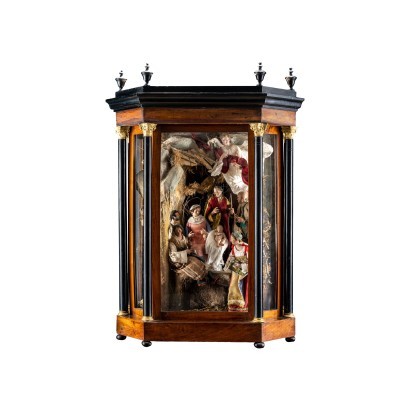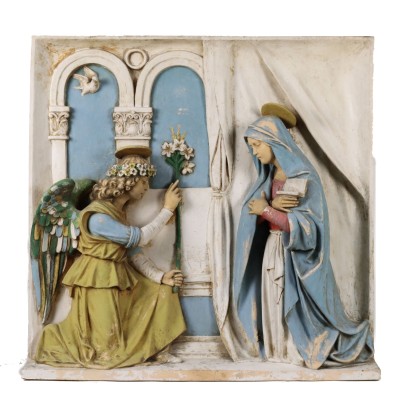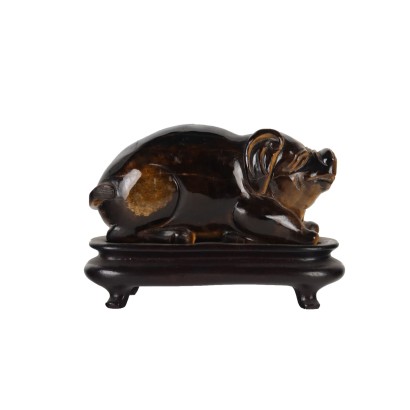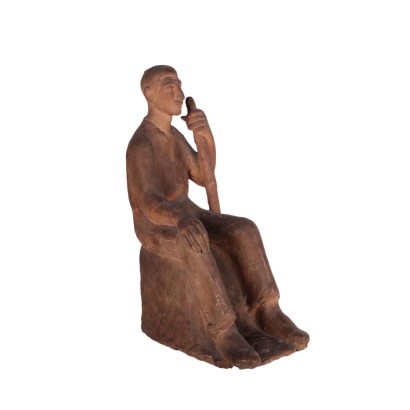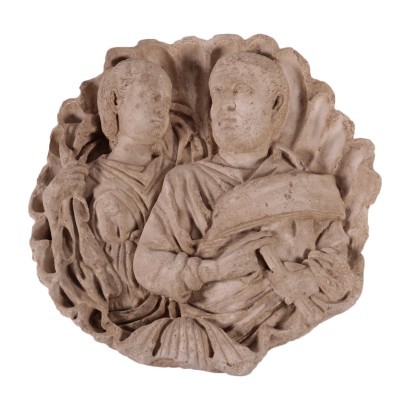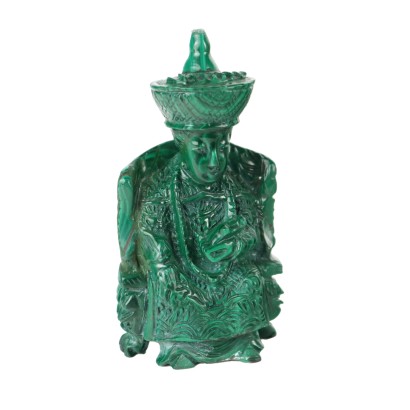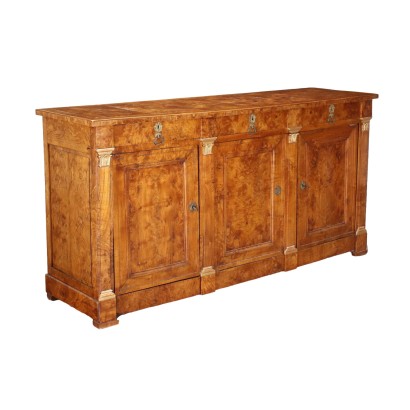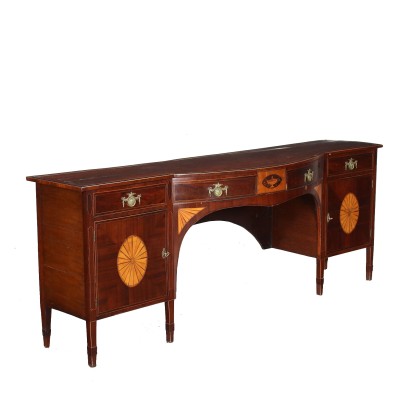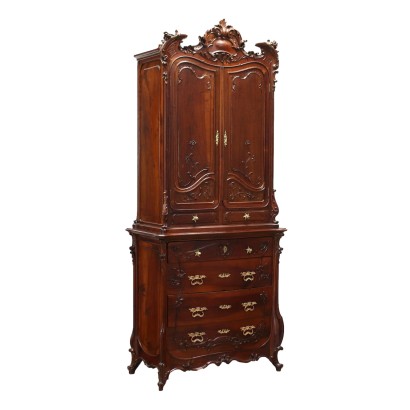Nativity Scene Mahogany Bronze Fabric Italy XIX Century
Features
Age: 19th Century / 1801 - 1900
Origin: Napoli, Italy
Main essence: Mahogany
Material: Gilded Bronze , Paper Mache , Terracotta , Fabric
Description
Nativity scene with the Holy Family in a cave, surrounded by the common faithful led by the angel who gave them the announcement, placed in the upper part. The figures have hands and faces in terracotta painted in polychrome and are dressed in cloth clothes; the cave is made of papier-mâché, glued to the painted background, and is finished with straw and wood details. Placed within a mahogany cabinet supported by turned and ebonized feet, the uprights are made up of columns, also ebonized, with Corinthian capitals in gilded bronze, supporting the upper entablature, decorated with vase-shaped elements. The front and sides have glass, to allow them to be used as a display case. Access to the interior is done by removing the upper part.
Product Condition:
Product that due to age and wear requires restoration and resumption of polishing.
Dimensions (cm):
Height: 118,5
Width: 85
Depth: 52
With certificate of authenticity
Certificate issued by: Enrico Sala
Additional Information
Notes historical bibliographic
The nativity scene belongs to the Neapolitan production of the mid-19th century, as clearly denoted by the reliquary in late Empire style that contains it. The tradition of nativity scenes in the Neapolitan city saw its most successful moment in the eighteenth century, when their commission was no longer exclusively on the part of churches and religious orders, but also the rich and the nobles began to request their realization. Thus it was that the cribs began to spread also in the secular field, becoming real scenographic apparatuses more and more complex and adapted to different needs. Among the most important are certainly those exhibited at the Museum of the Certosa di San Martino, including the famous Cucciniello nativity scene (1887-1889). As is well known, the Neapolitan nativity scene tradition is still quite widespread today, with numerous artisans and shops specialized in the creation of statuettes, grouped in the central Via di San Gregorio Armeno. In our case, the entire scene of the adoration of the shepherds is grouped in a small space, in order to be placed inside the case, to be placed on a console or a sideboard.
Age: 19th Century / 1801 - 1900
19th Century / 1801 - 1900
Main essence: Mahogany
It is one of the most precious and sought-after woods in cabinet making. It was discovered in Central America around 1600 and began to be imported to England in the 1700s. Much appreciated for its hardness and indestructibility, it became widespread following the blocking of walnut exports from France in 1720 and the consequent elimination of English import duties on mahogany from the colonies in America and India. The most valuable version comes from Cuba, but it became very expensive. At the end of the 18th century it began to be used also in France in Louis XVI, Directory and Empire furniture, its diffusion declined starting from when Napoleon, in 1810, forbade its import. It was generally used in the manufacture of elegant furniture, due to its characteristics and beautiful grain. Material:
Gilded Bronze
Paper Mache
Terracotta
Fabric



